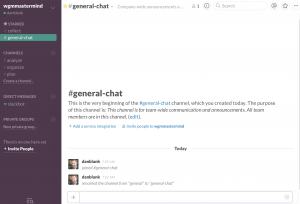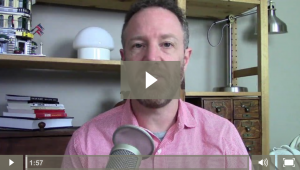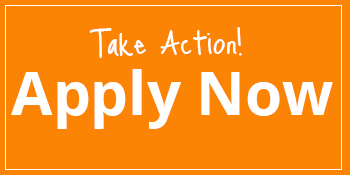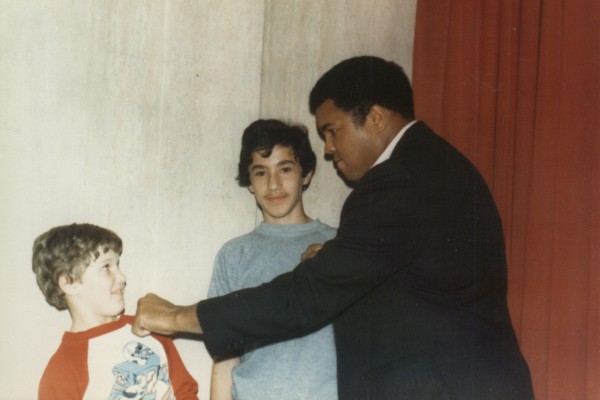Today I want to share the advice I give to every writer and creative professional who is overwhelmed with social media, and either:
- Doesn’t know how to make it feel effective towards their goals. They want it to feel meaningful again.
- Has lost enthusiasm for social media. They want it to feel fun again.
If this resonates for you, here are specific actions I would encourage you to take:
Observe models for success. Identify — AND LEARN FROM — those who are doing things well.
This is not about copying what they do. Instead, it is about experiencing the joy in what they share, and seeing the potential of what is possible. To find those who inspire you, and remind yourself the magic that can be created with a Tweet, a status update, a photo, a reaction, or live video.
Magic? Yes. To me, social media can feel like magic when it creates a feeling within you of deep human connection; when it inspires us with a simple but immediate photo or phrase; when it turns a bad morning into a quick smile. That is magic.
To identify models for success, you can begin with identifying 3 to 5 people, and as many as 20. Find real people — not brands — whose social media accounts you love. Pick people who are truly engaged on social media. Those who:
- Update frequently
- Who share personal viewpoints and experiences, not just an endless stream of links
- Who engage deeply with others via replies, comments, etc.
Want some examples? Here are three people who inspire me with how they use social media in personal ways:
Debbie Ohi on everything, but you can start with her Twitter.
Tina Roth Eisenberg on Twitter.
You know the funny thing about this list? In the past couple years, I have felt less and less enthused about Twitter, but have found that the people listed above have KEPT ME ENGAGED with it. Again and again, they have shown me how special Twitter can be.
Find those people for your own work! Ideally, you can craft a list of 20 people to focus on.
Choose one social network to focus on. Do not try to master them all. Pick one.
How do you figure out which to choose? Don’t just default to the one that feels the most popular, or you are most comfortable with. Go to where your audience is.
To figure that out, use your models for success. If you are a novelist, a memoir author, or a nonfiction author, identify 20 current writers who have the audience you hope to one day engage. See where these authors are online. Look at which social networks are most successful for them — have the most followers and the most engagement.
Take a month to experiment if you still aren’t sure. Create fake profiles if you like, and just do random experiments. Follow a bunch of people on Instagram, on Twitter, on Facebook, on Tumblr. Try all of the functions of the social networks: posting, favoriting, resharing and commenting.
Reply, reply, reply to others! Again, make social media “SOCIAL.” For those that you engage with, consider what they care about more than anything. Validate that.
I will say this again: do not simply default to what feels comfortable. Why? Because what feels comfortable is oftentimes what feels like hiding. It feels “safe.” Too many writers choose the wrong social media platform to “engage” with because it is the one they feel they can hide behind the most.
If you think that you are going to find success without “putting yourself out there,” then you haven’t studied successful people enough. Behind every story of success is a series of social risks. Social media is very much ABOUT social experiences. Take a risk.
Instead of thinking of all you have to lose, consider what you have to gain. New friendships, meaningful experiences, and an audience for your work.
Collaborate with a friend. This week I spent a lot of time walking around my town playing Pokemon Go. What did I see? Groups of people collaborating about the game. There were groups walking around together, conversations between strangers, and those playing with their significant others as if it was a date. Why? Because when you make something social, it becomes more fun. You are no longer worried about social anxiety, because you are validated by your friend.
Whenever you see a successful fitness or weight loss program, it is nearly always inherently social. Group activities are highly effective in learning and in encouraging a specific result.
Make a pact with five friends that you are finally going to make Twitter fun; that you are going to understand Snapchat; that you will follow each other on Instagram.
Even with the list of examples of people who inspire me on social media from above — I have not reached out to those people to make a pact with them, but every time I logon to Twitter, that is who I see. They are my experience of social media. Go a step further if you need and create a group to do this.
Going back to the Pokemon Go example, this is someone who created a public meetup locally for people to get together and meet each other to walk around town and play the game. They took the leap from simply observing strangers playing the game, to try to forge new friendships in the process.
Here is a great Creative Mornings talk about the value of taking the risk to connect with others.
Focus on quality, not quantity. Social media is a vapid wasteland of garbage — UNTIL — you make one meaningful personal connection. Then, suddenly, it is magical.
Instead of looking at the number of followers each week, focus on the depth of engagement. How you brightened the day of someone. How they brightened your day.
Set a goal not of follower count, but if you can create one meaningful experience each day. If you can do something that results in someone else saying to you, “Wow — thank you! You made my day!”
How can you do that? Focus on the obvious: what matters most to each of us? If you love an author, buy their book and shout about it. Tell others how great that author is.
If someone you like writes a blog post, leave a meaningful comment on it. Think about it: they spent hours writing it and took the risk to click the “publish” button. They desperately want validation. GIVE IT TO THEM.
For someone you follow on Instagram shares daily photos that inspire you, send them an email telling you what their photos have added to your life.
None of this is “new” or “trendy.” It is the old fashioned human stuff that we all say that we wish happened more often in our culture. MAKE IT HAPPEN. Be the person to add it to the lives of others.
Fake it till you make it. Too often when we feel malaise or disgust with social media, we either abandon it or delete our accounts. The action feels like a powerful rejection.
Instead, show up. Show up each day and find ways to see the magic. To create magic. Sure, it may not feel that way at first.
But here is the question: are you just a tourist? Are you someone driving through a run down town saying, “What a dump.” Or are you the person who begins talking to residents. Begins picking up random pieces of garbage you encounter. Begins making people’s days brighter. Begins finding the goodness that may be hidden, and helps share that with the world.
If social media feels foreign to you, consider how it relates to a real-life situation. Let’s say you are invited to a dinner party of a friend of a friend — what are your goals for that evening?
- To feel special (not view it as a contest of how many people you can meet)
- To meet cool people (not judge them as “good” if you become friends, and “bad” if you don’t)
- To have a fun experience (not collect business cards)
- To feel closer to your community (not view them as potential customers)
The results of the night are measured in stories, not numbers. That is what social media should be for you.
Many people — me included — have social anxiety in group settings. When I walk into a party, I basically “fake it until I make it.” I try to look comfortable, and do all of the standard actions I see others do. I get a drink, I make small talk, and I basically seek out the one thing that matters: a meaningful conversation.
On social media, that too can be a strategy. You aren’t expected to feel amazing the first time you try a social network. Much like any social situation, it takes time to get comfortable, and for a wonderful moment to present itself.
Don’t be generic. Too often, we feel that we can “fit in” by not standing out.
Instead, I would advise you to fill social media with what you care most about. The creative inspiration that drives you.
To quote a fictional character (Don Draper from Mad Men):
“If you don’t like what is being said, then change the conversation.”
This is your opportunity in social media. To change the conversation to something you are enthusiastic about; to change the conversation to something that matters deeply.
Use social media to create meaning in the lives of others, and in your own life.
What one action can you take in the next week to start this?
Thanks.
-Dan

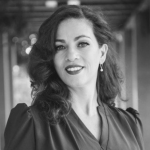 “This group has lit a fire under me. It has created energy and momentum with my writing. Plus: I’m having so much fun!”
“This group has lit a fire under me. It has created energy and momentum with my writing. Plus: I’m having so much fun!”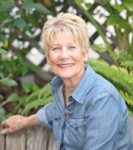 “I’m telling you, these Masterminders are a generous and creative and supportive group. And that Dan Blank is generous and helpful beyond the beyond.”
“I’m telling you, these Masterminders are a generous and creative and supportive group. And that Dan Blank is generous and helpful beyond the beyond.” “There are so many layers of emotional and creative spirit in this group. I can feel positive momentum building.”
“There are so many layers of emotional and creative spirit in this group. I can feel positive momentum building.”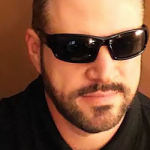 “Dan promised me collaboration when I signed up for this group. I had my doubts, but not anymore. Being a part of the the Mastermind group has brought so much clarity (and simplicity) to my creative work.”
“Dan promised me collaboration when I signed up for this group. I had my doubts, but not anymore. Being a part of the the Mastermind group has brought so much clarity (and simplicity) to my creative work.” “Dan’s Mastermind group is a safe haven for creators and writers. Dan and my fellow Mastermind participants helped me define the direction for my writing and reach more readers through my website, blog and social media. I recommend this group to anyone looking for support and direction in their creative projects.”
“Dan’s Mastermind group is a safe haven for creators and writers. Dan and my fellow Mastermind participants helped me define the direction for my writing and reach more readers through my website, blog and social media. I recommend this group to anyone looking for support and direction in their creative projects.” “WOW. I’m really blown away (seriously, not exaggerating) by the kind, helpful responses in this group. When I signed up, I had wondered if I was doing the right thing by joining this Mastermind –– I was afraid I wasn’t really ready for the step. But now I see that this is exactly what I needed.”
“WOW. I’m really blown away (seriously, not exaggerating) by the kind, helpful responses in this group. When I signed up, I had wondered if I was doing the right thing by joining this Mastermind –– I was afraid I wasn’t really ready for the step. But now I see that this is exactly what I needed.”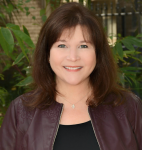 “I believe that Dan Blank has created MAGIC here. This group has held me accountable to making a positive change in my creative work — I have never been a part of something this powerful before!”
“I believe that Dan Blank has created MAGIC here. This group has held me accountable to making a positive change in my creative work — I have never been a part of something this powerful before!”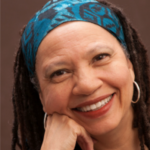 “This Mastermind has given me a sense of direction with the business side of my writing that I’ve never had before.”
“This Mastermind has given me a sense of direction with the business side of my writing that I’ve never had before.”